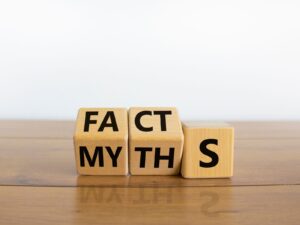
How many times have you heard lately that voting machines are rigged and can’t be trusted, or
“I don’t think my vote counted, I need proof!”
These statements are unfortunately too common today. If you hear from constituents who are still skeptical about election outcomes nationally and locally, this blog will shed some light on the process election technology experts and administrators go through before a machine is certified and used in an election.
It’s a long journey our voting systems travel before they ever find their way to a polling place. First, a little background: In 2002 a law was passed by the U.S. Congress, The Help America Vote Act (HAVA). HAVA mandated certain election reforms and created a new agency called the U.S. Election Assistance Commission (EAC). One of the roles of the EAC was to develop a federal certification process for voting machines. The EAC together with the National Institute of Standards and Technology (NIST) developed the Voluntary Voting System Guidelines (VVSG) which were requirements for a voting system to adhere to. Though they are voluntary, every state in varying degrees depends upon the federal certification process. In fact, every voting system that is being used across the country has been tested by a NIST accredited Voting System Test Laboratory (VSTL).
Let’s take a look at a couple myths commonly circulated across the country:

Myth 1: Election systems are not adequately tested before being certified.
Reality: State and local election officials implement rigorous testing practices to help ensure voting system hardware and software function as intended. In fact, before a voting system can pass federal certification, it must adjudicate one million ballots without a single error, that’s right, one million ballots! NIST together with the EAC and the Technical Guidelines Development Committee (TGDC) continue to develop a rigorous set of requirements and subsequent test assertions for modern day voting systems. No voting system is being used in the field to date that hasn’t gone through this exhaustive testing procedure.
Myth 2: Voting machines at the polls are full of irregularities.
Reality: Every voting machine being used in an upcoming election will have been tested with sample ballots to confirm they are adjudicating with 100% accuracy. Once these systems “hatch”, aka pass the federal certification process and are deployed for use in the field, localities across the country conduct what is called a Logic and Accuracy (L&A) Test prior to every election. In short, this means that every machine being used in the upcoming election will have been tested with sample ballots and validated that they are adjudicated with 100% accuracy. Yes, the machines we vote on were tested to make sure they were tabulating with “perfect” accuracy. If there is ever a discrepancy in an election, most of the time it was the voter that didn’t follow instructions when filling out their ballot. When it comes to technology, user error is quite common ─ just ask any IT administrator.
Let me get just a little deeper into the L&A process. Every locality has a certain combination of ballots that are arranged by precinct, we call these ballot styles.
A precinct is a geographical area with a unique combination of districts, from federal, state, county, municipal, and down to school and special districts.
Every state has a varying amount of precincts and across the country there are over 175,000 precincts. To give some perspective, each of these precincts have at least one ballot style and some may have several if there are splits within the precinct. We don’t need to get too much more into those weeds, but the point is that across the country we have a certain number of ballots being tested for each ballot style.
If 50 ballots were tested for each ballot style (including some splits) across the country that would be around 9 million ballots being tested on machines yielding 100% accuracy.
After the tests are complete, all of the vote totals on the machines are set to zero and tamper-evident locks and seals are put on every critical component of the machine and also captured in the chain of custody log (see Part 4: Fortifying the chain of custody: Shore up weak links in election security). These locks and seals are only broken on election day by a bipartisan group of poll workers. Then, after all of that, actual voting begins. That is an exhaustive process that should give us greater confidence when we cast our ballot on election day.
The local election office is where these L&A certifications are typically filed. Many localities invite the public to observe the L&A process of testing the machines. I would encourage anyone that is curious about this process and would like to see firsthand how it works, contact your local election office.